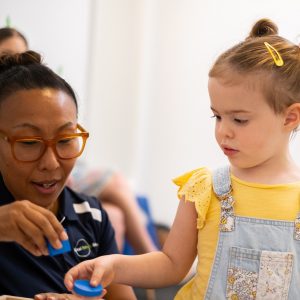Improving In-House Paediatric Occupational Therapy Services
Enhance in-house paediatric therapy with our guide on key practices, tracking progress, and effective adjustments.
In-house paediatric occupational therapy is a specialised approach where therapy services are delivered directly within the child’s familiar environment, such as their home or school. This method offers several distinct advantages, including enhanced comfort and reduced anxiety for children, which can significantly improve their engagement and outcomes.
By integrating therapy into everyday settings, practitioners can better tailor interventions to real-life challenges and support children in their natural routines. This approach not only fosters a more personalised and effective therapeutic experience but also facilitates stronger collaboration between therapists, families, and educators.
Key Components of an Effective In-House Therapy Program
To ensure the success of an in-house paediatric occupational therapy program, focusing on two key components is essential: assessing patient needs and setting up the right resources and equipment.
- Assessing Patient Needs:
- Start by thoroughly evaluating each child’s specific needs and goals. This involves understanding their developmental stage, identifying any functional challenges, and tailoring therapy plans to address these issues within their home or school environment. Effective assessments ensure that therapy is personalised and targeted, which maximises its impact.
- Setting Up Resources and Equipment:
- Equipping the therapy environment with the appropriate tools and resources is crucial for effective intervention. This includes selecting age-appropriate therapy materials, creating a conducive space for therapy activities, and ensuring that any necessary adaptive equipment is available and properly set up. Properly organised resources facilitate smooth and efficient therapy sessions, supporting the child’s progress and comfort.

Implementing Best Practices
To maximise the effectiveness of in-house paediatric occupational therapy, it’s important to focus on two best practices: structuring therapy sessions and engaging with families.
- Structuring Therapy Sessions:
- Organise therapy sessions to ensure they are productive and aligned with the child’s goals. This involves setting clear objectives for each session, using a consistent routine to provide stability, and incorporating engaging activities that address the child’s specific needs. Tailoring sessions to the child’s interests and daily routines can enhance motivation and participation, leading to better outcomes.
- Engaging with Families:
- Active involvement of families is crucial for the success of in-house therapy. Educate parents and caregivers about the therapy goals, techniques, and how they can support their child’s progress at home. Regular communication and collaboration with families help in maintaining consistency, addressing any concerns, and reinforcing therapeutic activities beyond the therapy sessions. This partnership ensures that therapy is integrated seamlessly into the child’s daily life and promotes sustained progress.
Measuring and Enhancing Outcomes
To ensure the ongoing effectiveness of in-house paediatric occupational therapy, it is vital to focus on measuring progress and making data-driven adjustments to therapy plans.
- Tracking Progress and Using Data:
- Implement robust methods for monitoring and evaluating the child’s progress. Utilise assessment tools and data collection techniques to track improvements in skills, behaviors, and functional abilities. Regularly reviewing this data helps identify trends, measure success against goals, and make informed decisions about the effectiveness of the therapy interventions.
- Implement robust methods for monitoring and evaluating the child’s progress. Utilise assessment tools and data collection techniques to track improvements in skills, behaviors, and functional abilities. Regularly reviewing this data helps identify trends, measure success against goals, and make informed decisions about the effectiveness of the therapy interventions.
- Adjusting Therapy Plans Based on Feedback:
- Continuously gather feedback from the child, family, and other involved professionals to refine therapy plans. This feedback provides valuable insights into what is working well and what might need adjustment. By adapting therapy plans in response to this input, you can address any emerging challenges, optimise therapeutic approaches, and ensure that the therapy remains relevant and effective for the child’s evolving needs.
In-house paediatric occupational therapy offers a tailored and effective approach by integrating therapy into the child’s familiar environment. Key components for success include assessing patient needs, setting up appropriate resources, structuring therapy sessions, and engaging families. Measuring progress through data and adjusting therapy plans based on feedback are crucial for enhancing outcomes and ensuring continued effectiveness.
To optimise your in-house paediatric therapy program and achieve the best results for your patients, consider seeking expert advice and additional resources. Contact us today for a consultation or more information. Reach out at 1300 685 046 or email [email protected] to explore how we can support you in enhancing your therapy services.
